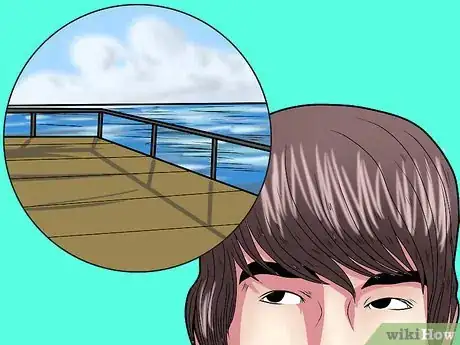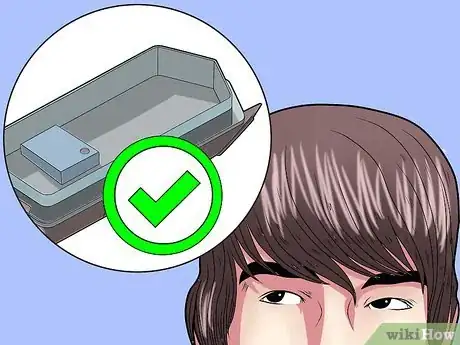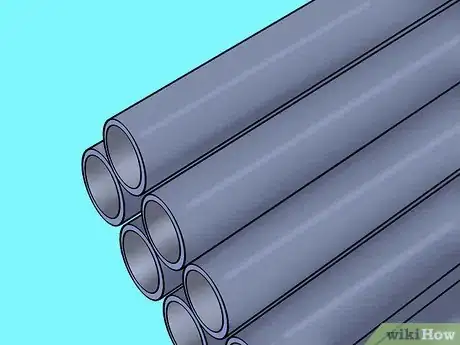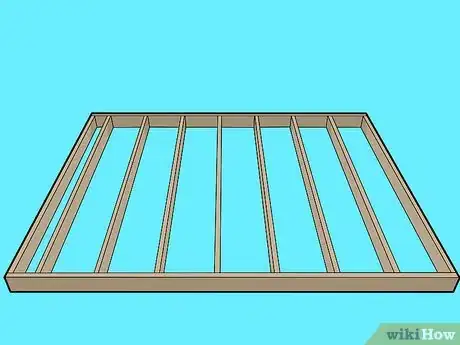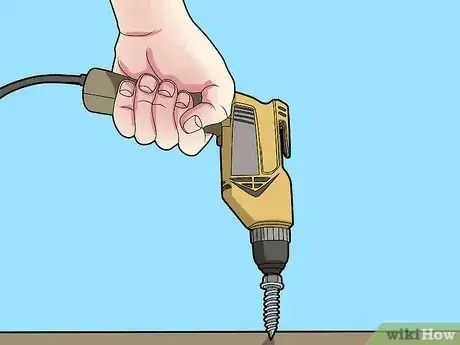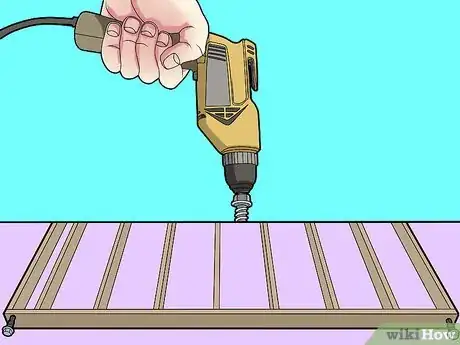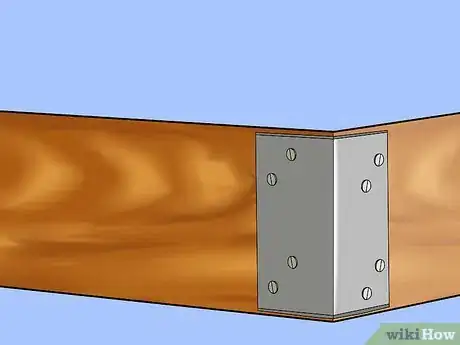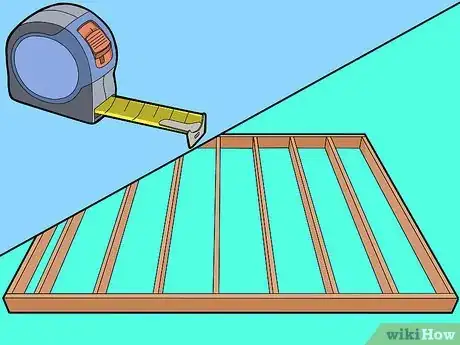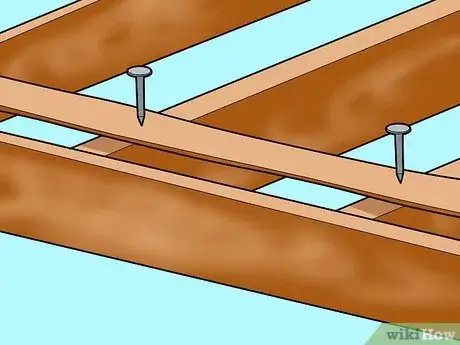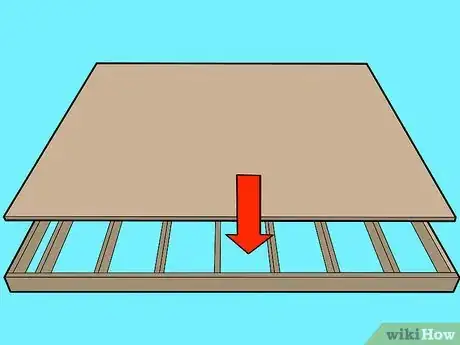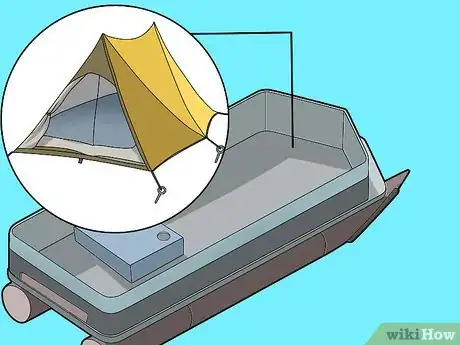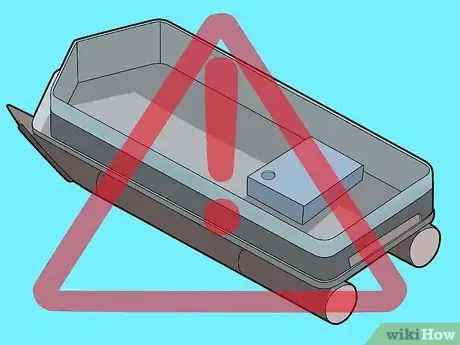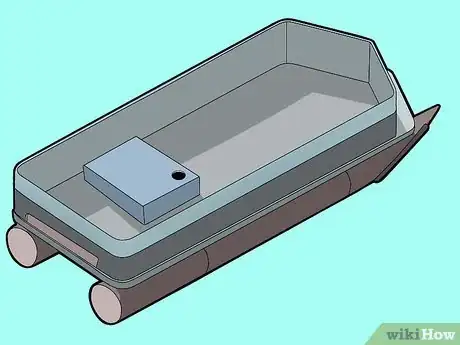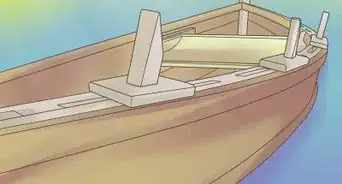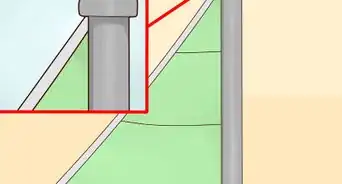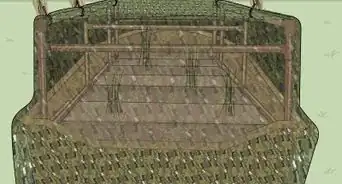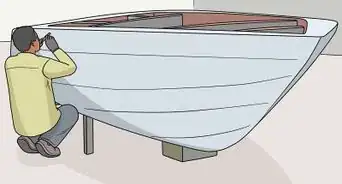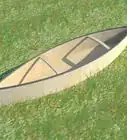X
wikiHow is a “wiki,” similar to Wikipedia, which means that many of our articles are co-written by multiple authors. To create this article, 26 people, some anonymous, worked to edit and improve it over time.
This article has been viewed 245,187 times.
Learn more...
Building an overnight pontoon boat can be a challenge, but with some luck at the local salvage yard, some hard work, and mainly, some very creative designing, it can be done.
Steps
-
1Lay out your basic design. Come up with reasonable and practical requirements, since under building will leave you with less deck space than you need, and overbuilding will send you to Davey Jones' locker with weight and expense.[1]
-
2Choose a practical place to build your project. The first concern should be getting your "ship" to the "harbor" safely, and in one piece. This will mean having a large enough suitable trailer to haul it, and a vehicle capable of pulling it, so a very large craft might be more simply assembled on the water to begin with, if a private waterfront lot or private pond is available.[2]Advertisement
-
3Locate suitable pontoons. Since the vessel must be seaworthy, the flotation is a critical factor in the design. Some scrapyards may have very large PVC water pipe, plastic drums, or even military "drop tanks" from surplus. The drop tanks are ideal, since they are rust resistant, and contain honeycombed baffle material which makes them extremely strong, plus they are "aerodynamic", which would roughly equal "hydrodynamic". The main thing is to find something which displaces sufficient water to give flotation and stability to your vessel.
-
4Select the material you are going to frame the boat with. For this article, we will use PVC water pipe as the flotation since it may be the most readily available material, and we will discuss attaching the support framing made of 2x4 treated southern pine lumber. The example boat dimensions will be 8 feet (2.4 m) wide, and 16 feet (4.9 m) long. These dimensions are just for reference, and with a little design change, you may adjust them to fit your own needs.
-
5Lay two sections of 12 inch (30.5 cm) diameter PVC drain pipe parallel on a flat, level surface, with the ends capped and sealed to keep water out. This can be done with a glued slip cap, or a no-hub band and cap assembly. These materials are quite expensive, so hopefully you will find them in a salvage yard or from surplus materials at an underground utility company. Another possibility would be to make a wooden plug and fasten it in place using epoxy and screws.
-
6Cut 8 foot (2.4 m) long 2X4 treated pine boards 7 foot (2.1 m) 9 inches (22.9 cm) long, and lay them out down the length of your pipe on 24 inch (61.0 cm) centers.
-
7Nail a band across the ends of these "joists", using a 2X4 treated board 16 feet (4.9 m) long on each side. This is the support frame for your vessel.[3]
-
8Using self-drilling, coarse thread, 2 1⁄2 inch (6.4 cm), hex-head "tech" screws, attach a 21 inch (53.3 cm) block of treated 2X4 laid flat between each of your joists to nail the joists to. Two screws per "blocking" should be sufficient.
-
9Toenail, or screw the joists to these blocking.
-
10Lay a 1 inch (2.5 cm) wide, 16 gauge galvanized strap diagonally across the top of your deck boards from corner to corner each direction. This is the bracing which will keep the deck "square" during the rest of your building process.
-
11Measure the deck across opposite corners and rack it until the measurements are equal at each diagonal.
-
12Fasten the strapping to each joist, either by drilling the strapping and nailing with 16d (3 1/2 inch) hot dipped galvanized nails, or screwing with the tech screws used for securing your blocking.
-
13Install your deck. You may use 1X4 or 1X6 treated lumber, or treated marine grade plywood. You should choose the driest, least heavy material available, since the two 12 inch (30.5 cm) PVC pipes have a total displacement of only about 1572 pounds, and this will factor in how much superstructure you will be able to build on deck. Using pressure treated yellow pine in the dimensions quoted here, you have a gross weight of approximately 600 lbs, plus the weight of your pipe pontoons. As you can see, at this point you have a maximum load weight of about 900 pounds, so this will limit the on deck construction to very light materials and minimal gear.[4]
-
14Decide on whether you will need a shelter for overnight excursions. This will be a critical factor in whether you decide on extra flotation or upgrading your design to a larger pontoon size, 16, or even 24 inch (61.0 cm) pipe, for example. For basic camping, a small tent can be erected on the deck, using screws or even nails in place of tent stakes.
-
15Consider safety. This step should be incorporated in every aspect of the construction and use of your boat. The idea here, is giving some thought as to who will be riding the craft. Small children, people who are not capable swimmers, and other persons who may be at risk of drowning should be a high priority of concern, and you may choose to install handrails for safety around the deck. The options here include, but are not limited to, using schedule 80 3⁄4 inch (205.1 cm) PVC pipe with glued slip joint couplings for posts and rails, using metal pipe posts with rope or cable rails, or building a wood handrail framed up from and screwed to the deck.
-
16Launch your new boat. If you have built near the water, you may simply jack the boat up, slide dollies under the pontoons, and slide it into the water. Otherwise, you will need to use jacks to lift it high enough to back a flat bed trailer underneath it, tie it down securely, and haul it to a launching point.
Advertisement
Community Q&A
-
QuestionHow much flotation do you need?
 Community AnswerEnough to be able to hold anything you're planning on taking on board, including yourself, safely. Test the flotation of the materials before building your boat.
Community AnswerEnough to be able to hold anything you're planning on taking on board, including yourself, safely. Test the flotation of the materials before building your boat. -
QuestionDoes it need a motor?
 Community AnswerYes, you need a motor. It's not like paddling a canoe, you would be fighting the slightest breeze.
Community AnswerYes, you need a motor. It's not like paddling a canoe, you would be fighting the slightest breeze. -
QuestionHow much flotation do I need on a homemade 500-pound boat?
 Community AnswerYou would need 63 gallons of displacement. Each gallon of water is 8 pounds, so you divide your maximum weight by 8 pounds to obtain weight displacement. You also have to consider your load weight and factor that in as well.
Community AnswerYou would need 63 gallons of displacement. Each gallon of water is 8 pounds, so you divide your maximum weight by 8 pounds to obtain weight displacement. You also have to consider your load weight and factor that in as well.
Advertisement
Warnings
- Personal flotation devices (as in life jackets) are required by law for every passenger on any watercraft in many jurisdictions.⧼thumbs_response⧽
- Have good, strong, rope and an anchor on board for securing your boat in case you encounter currents.⧼thumbs_response⧽
- Use all required safety equipment, just as you would on any watercraft. This may include, but not be limited to, fire extinguishers, life vests, life rings that can be thrown, signalling devices (whistles or air horns), and navigation lights.⧼thumbs_response⧽
- Never go boating when drunk! The majority of drownings happen when people are intoxicated.⧼thumbs_response⧽
- If using recycled drums or aircraft fuel tanks for flotation, they should not contain any residue of their original contents. Fuels, oils, or industrial chemicals could leak out and cause an environmental impact if they are not emptied and thoroughly cleaned prior to use.⧼thumbs_response⧽
Advertisement
Things You'll Need
- Saw, drill, and screw gun.
- Hammer and nails.
- Screws.
- Lumber.
- Pipe, fittings, and glue (with appropriate primer).
- Galvanized metal strapping.
- Measuring tape.
- Trailer and tow vehicle.
- Jacks for lifting the finished boat.
- A paddle or an oar.
- Safety equipment.
- Camping gear.
References
About This Article
Advertisement

